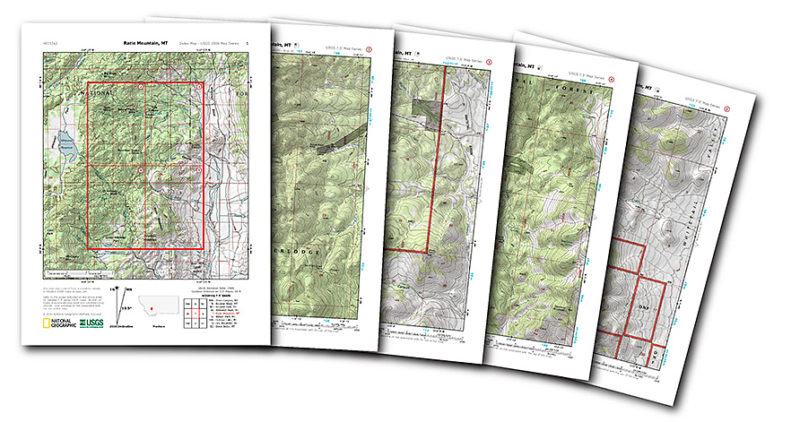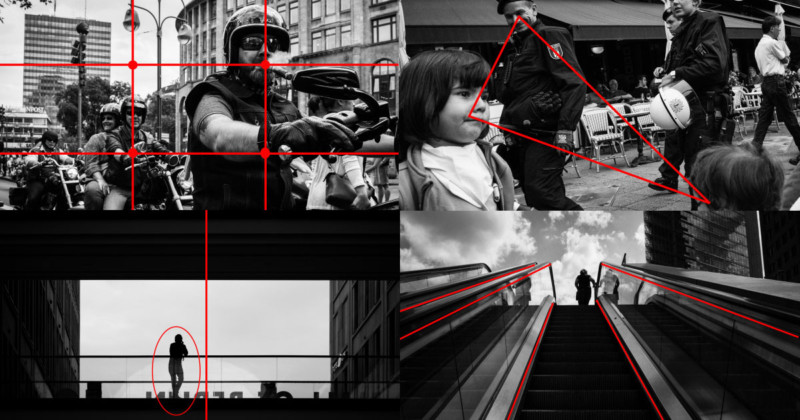
The folks at National Geographic just did a solid favor for all the adventurous outdoor photographers out there. They put every US Geological Survey (USGS) topographical map from across the United States on one easy-to-navigate site and made them easy to print out at home.
News Corp photographer Brett Costello was robbed of $40,000 in camera gear at a cafe in Rio a few days ago. Then yesterday, while covering an event at the Olympics yesterday, Costello spotted the thief pretending to be him.
Recently I got a message from a person who said that they liked my pictures, but unfortunately they don’t have a “photographic eye.” This inspired me to write the following article about basic aesthetics and their relationship to photography.
After showing you how to make a tripod using a piece of string, I’m going to go a little more surreal this time by explaining how an old frying pan can be used to get dramatic low angle images.
We recently shared the impressive Canon DSLR arsenal Getty Images brought to the Rio 2016 Olympics. Here’s something else that’s impressive: the agency team of photographers and photo editors at the Games can snap, edit, and share official Olympic photos in as little as two minutes.
Looking to buy a lens in the popular 70-200mm focal range for your Canon DSLR? If want the best money can buy, you’re probably looking at a Canon 70-200mm f/2.8L IS II, which costs a hefty $2,200. If you’d like the same range, fixed f/2.8 aperture, and stabilization but at a more affordable price point, the $1,500 Tamron 70-200mm f/2.8 Di VC might be a product you’ve been eyeing. But how do these two lenses stack up against each other, and how big of a difference is there?
In the 10-minute video above, Kai Wong of DigitalRev pits the two options against each other on the streets of Hong Kong.
The opening ceremony hasn’t even kicked off yet, and olympic photographers are already having a hard time in Rio. Case in point: News Corp photographer Brett Costello recently had $40,000 worth of camera gear stolen… in broad daylight… in a crowded cafe… in 10 seconds flat.
Capturing a solid rocket booster test on video is no small feat. You need a camera that can capture slow motion footage and handle the dynamic range between the booster and the booster plume. Fortunately, NASA now has this super camera in their arsenal!
Recently, I had a portrait shoot with the legendary poet, rapper, and actor Saul Williams. It began with a simple stroke of luck: I saw he was scheduled to perform at a local club near my house, and so I did a quick search for the name of his manager. I easily found it and e-mailed them, introducing myself and explained that I would like to take his portrait.
Think Getty’s Canon DSLR arsenal at the Rio 2016 Olympics is impressive? Check out Canon’s official stockpile.
A 17-year-old boy in Russia has died after falling 9 stories from a rooftop while engaging in extremely dangerous “rooftopping photography.” The goal of the stunt was another eye-catching photo for his Instagram account.
Plotagraph Pro is really neat. The program lets you ‘animate’ cinemagraph style GIFs and videos from single JPEGs. There’s just one problem: the price. If the $300 asking price is too rich for your blood, we found a “pay-what-you-want” Photoshop action that does a great job mimicking the more expensive software!
What do you do if you’re out shooting on-location, without strobes, and you want to darken a bright background without affecting the light on your model? Joel Grimes shows you a neat trick that’ll work just as well as a strobe.
About a week ago at the 2010 Vancouver Olympics, Russ Beinder caught a Sports Illustrated photographer at the hockey rink with a pretty interesting gear setup: I think this is David …
Backers of the KitSentry Kickstarter by F-Stop Gear are out of luck. Just days after an in-depth report that claimed the company is “falling apart at the seams,” F-Stop Gear has officially announced that KitSentry will never be, and seems to have no way of reimbursing backers back.
Hey streettogs, if you want to learn some practical tips and techniques when shooting on the streets, check out the video above, or read more to see all 15 tips.
There is a big craze for Sony full frame (FF) mirrorless cameras at the moment, and seeing people rush onto that bandwagon is like watching lemmings following each other over the cliff.
This is a photo of an atomic bomb milliseconds after detonation, shot by Harold ‘Doc’ Edgerton in 1952 through his Rapatronic (Rapid Action Electronic) Camera.
The photo was shot at night through a 10 foot lens, situated 7 miles away from the blast, atop a 75 foot tower. Edgerton systematically turned on and off magnetic fields acting as the camera’s shutter, as opposed to a conventional, mechanical close.
How fast was the magnetic field shutter? 1/100,000,000th of a second.
Photographer Jimmy Nelson has spent over 3 decades traveling around the world and taking photos of people and places. He’s best known for his portraits of the disappearing tribes of the world. In the 6.5-minute video above (note: there’s a bit of nudity), Nelson shares 7 lessons he has learned from his years of photography.
The Samyang summer lens release bonanza continues. Last week it was a super-fast 35mm f/1.2 for mirrorless APS-C cameras; today, we get a new ulra-wide angle, the Samyang 20mm f/1.8 ED AS UMC for full-frame DSLRs and mirrorless cameras.





















